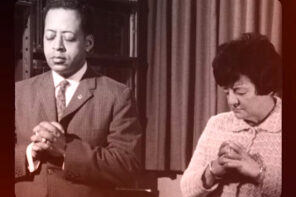Last week was a rough one for the Church of Scientology:
- On Tuesday, Australian news announced that Jan Eastgate, a Scientology leader, had been charged with “perverting the course of justice.” Eastgate is the leader of the Citizens Commission on Human Rights, a Scientology group dedicated to eradicating psychiatry. In 1985, she allegedly counseled 11-year-old Carmen Ranier not to tell police that her stepfather was sexually abusing her. Ranier’s family were Scientologists, and accusers claim that Eastgate sought to cover up the abuse to avert embarrassment to the Church.
- On Thursday, a hearing was held in a lawsuit between the Church of Scientology and Debbie Cook, a former Scientology leader. On New Year’s Eve, Cook sent an e-mail to thousands of Scientologists arguing that the Church had become too focused on “extreme fundraising” under its current leader, David Miscavige. The Church claims these e-mails violate a non-disclosure agreement Cook signed when she left the Church, though it agreed to drop its lawsuit.
- Saturday marked the fourth anniversary of “Project Chanology,” an anti-Scientology movement founded by the hacker group Anonymous. Project Chanology (which may now be breaking away from Anonymous as an independent movement) began in January 2008 when the Church of Scientology attempted to a remove material from an interview with Tom Cruise about his religion. Anonymous decried this move as censorship and began a campaign of tactics—both legal and illegal—to disrupt and discredit the Church of Scientology. That February, Anonymous members began to picket in front of Scientology headquarters, many of them sporting Guy Fawkes masks made popular by the film V for Vendetta. On Saturday, this “uprising” against the Church of Scientology was commemorated with a two-hour picketing session in front of the Church’s Time Square headquarters (It is currently unclear how many actually attended).
Scientology is a religion everyone loves to hate. Despite its small size, several journalists and individuals have become full-time critics, dedicating significant time and energy to sites such as Operation Clambake. In world religion classes, my students are fascinated by Scientology and inevitably bring it up as an example of a “cult,” although their ideas about Scientology are almost always derived from South Park and other satirical media. I have yet to meet a student who has spoken with a practicing Scientologist.
This is not to exonerate the Church of Scientology from the kind of accusations currently made against Jan Eastgate. Apostate Scientologists have come forward with stories of estranged family members, neglected children, lost fortunes, and even false imprisonment that are quite disturbing. However, compassion for these individuals does not seem to be what motivates all of Scientology’s critics. Project Chanology’s website, for example, features a video in which a gang of picketers scream homophobic epithets at a lone Scientologist. It is upsetting to watch and recalls nineteenth-century intolerance toward Catholics, Mormons, and other religious outsiders. Even public critics of Scientology have suggested that these tactics are likely to backfire, creating sympathy rather than outrage.
In a Project Chanology forum, one member explained his motivation for protest: “Because we’re great, and they’re Hitler-flavored.” Certainly some institutions are worthy of criticism, but how long before criticizing a minority religion become a sport and degenerates into bullying?




